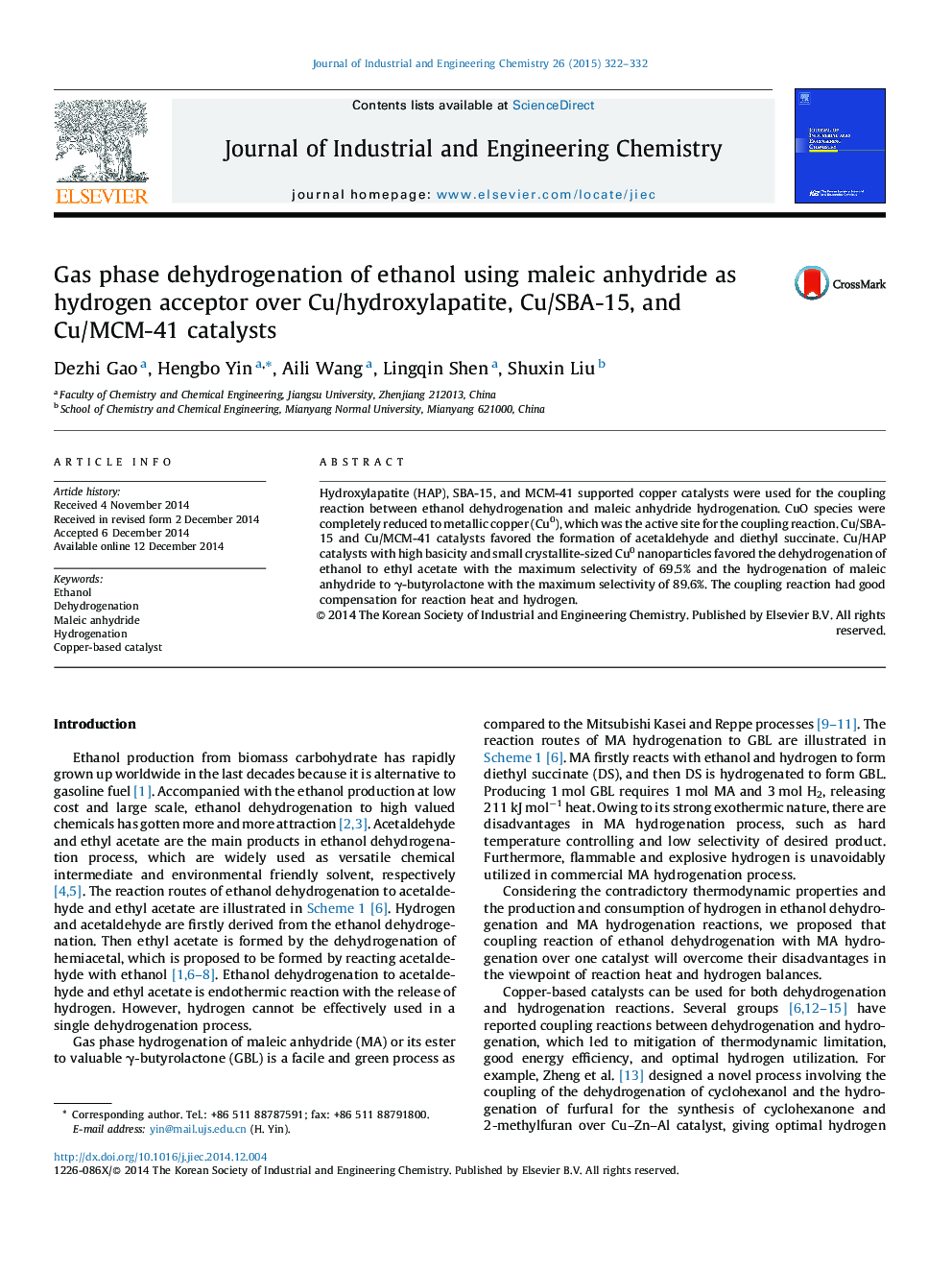| Article ID | Journal | Published Year | Pages | File Type |
|---|---|---|---|---|
| 228571 | Journal of Industrial and Engineering Chemistry | 2015 | 11 Pages |
•Cu/HAP with high basicity favored the formation of ethyl acetate and butyrolactone.•Cu/MCM-41 and Cu/SBA-15 favored the formation of acetaldehyde and diethyl succinate.•Coupling EtOH dehydrogenation and MA hydrogenation had good H2 and heat compensation.•EtOH dehydrogenation and MA hydrogenation were competitive reactions over Cu0 sites.
Hydroxylapatite (HAP), SBA-15, and MCM-41 supported copper catalysts were used for the coupling reaction between ethanol dehydrogenation and maleic anhydride hydrogenation. CuO species were completely reduced to metallic copper (Cu0), which was the active site for the coupling reaction. Cu/SBA-15 and Cu/MCM-41 catalysts favored the formation of acetaldehyde and diethyl succinate. Cu/HAP catalysts with high basicity and small crystallite-sized Cu0 nanoparticles favored the dehydrogenation of ethanol to ethyl acetate with the maximum selectivity of 69.5% and the hydrogenation of maleic anhydride to γ-butyrolactone with the maximum selectivity of 89.6%. The coupling reaction had good compensation for reaction heat and hydrogen.
Graphical abstractIn the coupling reaction between ethanol dehydrogenation and maleic anhydride hydrogenation, Cu/HAP with high basicity and small-sized Cu0 nanoparticles favored the formation of ethyl acetate and butyrolactone while Cu/MCM-41 and Cu/SBA-15 favored the formation of acetaldehyde and diethyl succinate. Coupling ethanol dehydrogenation and maleic anhydride hydrogenation gave good H2 and heat compensation.Figure optionsDownload full-size imageDownload as PowerPoint slide
